
Previous Conferences
ASCE Earth and Space Conference
Organized by Missouri University
of Science and Technology
Phone: (573) 341-4200
Fax: (573) 341-4992
Email: earthspaceconf@mst.edu
Guest Speakers
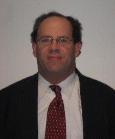 |
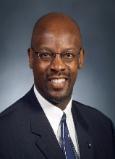 |
 |
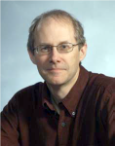 |
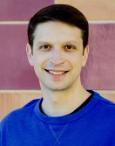 |
 |
| Dr. Goldberg | Dr. Shyne | Dr. Swallow | Dr. Melis | Mr. Wooster | Dr. Skelton |
Tuesday, April 10, 2018
Opening Session
8:00 a.m. - 10:00 a.m.
Ontario/Superior
Welcome: Robert K. Goldberg, PhD
2018 Conference Director
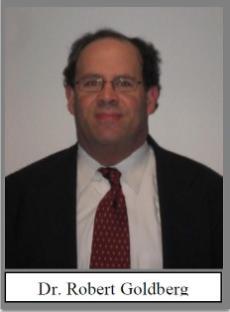 |
Biography
Dr. Robert K. Goldberg is a Research Aerospace Engineer in the Materials and Structures Division of NASA Glenn Research Center. Dr. Goldberg has worked at NASA for 26 years. Dr. Goldberg’s research has concentrated on the areas of composite mechanics and micromechanics. Specific recent topics of interest for Dr. Goldberg include developing analytical methods to predict the high strain rate and impact response of polymer matrix composite materials. Dr. Goldberg has produced over 130 technical publications, including over 30 articles in refereed journals. He received the NASA Exceptional Scientific Achievement Medal in 2016. Dr. Goldberg received his PhD degree from the University of Cincinnati in Aerospace Engineering in 1999. Dr. Goldberg is an active member of ASCE, serving on the Executive Committee of the Aerospace Division and as an Associate Editor for the Journal of Aerospace Engineering. He is the General Chair of the 2018 ASCE Earth and Space Conference. He is also an Associate Fellow in AIAA.
Speaker: Rickey J. Shyne, PhD
Director of Research and Engineering
NASA Glenn Research Center
Title: Overview of NASA Glenn Research Center
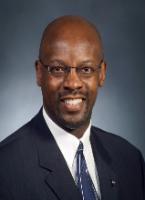 |
| Dr. Rickey J. Shyne |
Biography
Dr. Rickey J. Shyne joined the staff of the National Aeronautics and Space Administration (NASA) John H. Glenn Research Center at Lewis Field, Cleveland, Ohio, in February 1984. Dr. Shyne was appointed to the Senior Executive Service in August 2005 and was appointed the Director of Research and Engineering on February 3, 2014. In this position, he is responsible for leading and managing Glenn’s research and development competencies in propulsion, communications, power, and materials and structures for extreme environments with a staff of approximately 1100 scientists, engineers, and administrative staff in support of NASA’s aeronautics and space missions.
Before his most recent appointment, Dr. Shyne served as Director of Facilities and Test, Deputy Director of Engineering and Technical Services, Deputy Director of Safety and Mission Assurance, and Nozzle Branch Chief in the Research and Technology Directorate.
A native of Dayton, Ohio, Dr. Shyne received his Bachelor of Science degree from Tennessee State University (TSU), Nashville, Tennessee, and a Master’s of Science degree from the University of Toledo in Ohio, both in Mechanical Engineering. Additionally, he received the Doctor of Philosophy degree in Engineering Science with a concentration in fluid/thermal sciences from the University of Toledo. He has also completed the prestigious Harvard University John F. Kennedy School of Government Senior Executive Fellows Executive Management Program in Public Policy, the Aspen Institute Executive Management Program, and the Pennsylvania State University Engineer/Scientist Manager Executive Development Program.
Dr. Shyne, a registered professional engineer in the State of Ohio, was inducted as a charter member of TSU, Alpha Delta chapter of the Pi Tau Sigma Mechanical Engineering Honor Fraternity. He is the recipient of numerous prestigious honors including NASA’s Exceptional Service Medal for Leadership (2003); National Technical Association (NTA) Engineer of the Year Award (2003); NTA Technical Achiever of the Year Award (2003); NASA Glenn ACES Mentor of the Year Award (2006); US Black Engineer of the Year Award-Career Achievement in Government (2008); National Society of Black Engineers Golden Torch Award for Career Achievement in Government (2008) and a Presidential Rank Award for Meritorious Service (2013) by President Obama from a select group of career senior executives who have provided exceptional service to the American people over an extended period of time. He was recently selected for the 2014 Federal Professional Engineer of the Year Award He was also selected as an Accreditation Board for Engineering and Technology Commission evaluator by the American Society of Mechanical Engineers to review mechanical engineering programs for accreditation. Dr. Shyne has authored or coauthored 16 technical publications and three peer-reviewed international journal articles in the fields of aerodynamics/fluid dynamics and is a co-author of NTA’s book titled Careers in Science and Technology.
He is an associate fellow of the American Institute of Aeronautics and Astronautics and also holds professional memberships in the American Society of Mechanical Engineers and NTA. Additionally, he serves on the TSU College of Engineering doctoral advisory committee in computer information systems engineering, the TSU College of Engineering Industrial Advisory Committee and the Central State University Advisory Committee for a National Science Foundation grant on increasing minority participation in science and mathematics. He also serves as an ex-officio board member of the Cleveland Engineering Society and Minds Matter, a non-profit whosemission is to transform the lives of accomplished high school students from low-income families by broadening their dreams and preparing them for college success.
He is a member of the Peoples Community Church and is a life member of the Omega Psi Phi Fraternity, Inc. Dr. Shyne and his wife, Eulanda, are the proud parents of two sons, Rickey II and Eric, and they reside in Strongsville, Ohio
Speaker: Kristina L. Swallow, PE, ENV SP, F.ASCE
2018 ASCE President
Title: Preparing the Next Generation Civil Engineer
With an expanding global population, we must take care of aging infrastructure to meet current needs, and at the same time, move it into the future with new technologies and capabilities that will enable us to combat the problems of tomorrow. In this presentation, President Kristina Swallow will share how we need to prepare future civil engineers to meet these challenges.
As the oldest engineering society in the United States, ASCE represents 150,000 members in 177 countries. ASCE stands at the forefront of a profession that plans, designs, constructs, and operates society’s economic and social engine – the built environment – while protecting and restoring the natural environment.
President Swallow will explain the leading role of ASCE in advancing the civil engineering profession. She will also touch on the following focus areas of ASCE:
- Sustainable Infrastructure – Maintain and modernize America’s deteriorating infrastructure as well as make our communities sustainable
- ASCE Grand Challenge – Significantly enhance the performance and value of infrastructure projects over their life cycles by 2025 and optimize investments
Preparing the civil engineer for the future – Increase education requirements for engineering licensure to better protect the public in the future
 |
| Kristina L. Swallow |
Biography
Leading a team of engineers responsible for delivering public works projects, Kristina has been with the City of Las Vegas since 2012. She is responsible for negotiating design and construction contracts, reviewing progress of the work, coordination with public and private sector stakeholders, and responding to external comments or questions.
Prior to her current position, Kristina served as Senator Tom Udall’s lead on transportation policy. She worked on the Federal Aviation Administration reauthorization bill and the development and passage of the MAP-21 surface transportation authorization bill.
Kristina has been active in ASCE since 1995, serving on various Society-level committees such as the Committees on Education, and Diversity. She served as the Society’s appointed Governor on the Utility Engineering and Surveying Institute until her election as ASCE’s 2018 President.
In addition to her professional activities, Kristina is active in her community. She has served in leadership roles with the Junior League of Las Vegas, Southern Nevada Bicycle Coalition, Engineers Without Borders, and serves on the Advisory Board to the University of Nevada Department of civil and Environmental Engineering and Construction.
Kristina earned her Bachelor’s in Civil Engineering from the University of Arizona in 1994 and a Master’s in Civil and Environmental Engineering from the University of Nevada in 2004.
Speaker: Matthew Melis, PhD
Research Aerospace Engineer
NASA Glenn Research Center
Title: The Space Shuttle - Thirty Years of Flight with Lessons Learned from the Columbia Accident
On February 1, 2003, the Space Shuttle Columbia broke apart during reentry, resulting in loss of the vehicle and its seven crewmembers. For the next several months, an extensive investigation of the accident ensued involving a nationwide team of experts from NASA, industry, and academia, spanning dozens of technical disciplines. The Columbia Accident Investigation Board (CAIB), a group of experts assembled to conduct an investigation independent of NASA, concluded in August, 2003 that the most likely cause of the loss of Columbia and its crew was a breach in the left wing leading edge Reinforced Carbon-Carbon (RCC) thermal protection system initiated by the impact of thermal insulating foam that had separated from the orbiters external fuel tank 81 seconds into the mission's launch. During reentry, this breach allowed superheated air to penetrate behind the leading edge and erode the aluminum structure of left wing, which ultimately led to the breakup of the orbiter. The findings of the CAIB were supported by ballistic impact tests, which simulated the physics of External Tank Foam impact on the RCC wing leading edge material. These tests ranged from fundamental material characterization tests to full-scale Orbiter Wing Leading Edge tests.
Following the accident investigation, NASA spent the next 18 months focused on returning the Shuttle safely to flight. In order to fully evaluate all potential impact threats from the many debris sources on the Space Shuttle during ascent, a significant impact testing program was instituted at the NASA Glenn Ballistic Impact Laboratory. The results from these tests led to the validation of high-fidelity computer models, capable of predicting actual or potential Shuttle impact events, which were used in the certification of STS- 114, NASA’s Return to Flight Mission, as safe to fly.
Matt Melis provides a detailed look into the inner workings of the Space Shuttle and a behind the scenes perspective on the impact analysis and testing done for the Columbia Accident Investigation and NASA's Return to Flight programs. His presentation is full of rich, still and motion picture imagery, and, although technical, is easily understood by all audiences. In addition, highlights from recent Shuttle missions are presented demonstrating how NASA conducted it’s operations differently and more safely, post Columbia, through better imagery, better analysis, and enhanced best practices.
 |
| Dr. Matthew Melis |
Biography
Matt received both a BS in Civil Engineering and an MS in Engineering Mechanics from Michigan State University and has worked at the NASA Glenn Research Center for thirty three years. His primary area of focus is in advanced finite element modeling and analysis methods including nonlinear and dynamic impact loading. Trained in engineering mechanics, he has been recognized for expertise in actively cooled structures, stress analysis, ballistic impact research, and multiphysics analysis during his tenure at the Research Center. He has worked on numerous aeronautics and space programs for the agency including the International Space Station, the Space Shuttle and NASA’s Exploration Program. In the four and one half years that followed the Columbia accident, Matt was assigned full time to working the Columbia Accident Investigation and the Shuttle Return to Flight Program as technical lead of the NASA Glenn Ballistic Impact team. Matt currently leads an aeronautics research element of NASA’s Advanced Composites Program to advance our understanding of composite material response to high energy impact events.
In addition to his technical commitments, Matt also devotes significant effort to public outreach and teaching for NASA at all levels of education as well as professional groups. Since 2003, he has delivered dozens of invited lectures and keynote presentations at conferences pertaining to Ballistic Impact Research, The Columbia Accident Investigation, NASA’s Return to Flight and the Space Shuttle Program. Notable organizations he has spoken to include: The National Transportation and Safety Board, The Nuclear Regulatory Commission, Dartmouth College, The Canadian Royal Astronomical Society, Ontario Science Center, Ivey Business School in Canada, The University of Reykjavik, Iceland, The American Institute for Aeronautics and Astronautics, the American Society for Mechanical Engineers, and the American Society for Metals, Skywalker Sound, Industrial Light and Magic, and the London Science Festival.
Wednesday, April 11, 2018
Awards Luncheon
12:00 p.m. - 2:00 p.m.
Lakeside
Presentation Title: The Road to Mars
Abstract
SpaceX was founded in 2002 to revolutionize space technology, with the ultimate goal of making life multi-planetary by enabling the establishment of human civilization on Mars. Vastly decreasing the cost and improving the reliability of access to—and transport through—space is fundamental to achieving this goal.
SpaceX’s accomplishments to date—ranging from Falcon 1, Falcon 9 and Dragon to first stage reuse and the launch of Falcon Heavy—have demonstrated key capabilities that map into the future developments required for affordable human Mars missions.
The introduction of the BFR, currently in development, will allow the delivery of large payloads to the surface of Mars in the mid-2020s to initiate the build-up of an initial human outpost on Mars. The large payload capability, combined with the extensive use of local resources, will enable such an outpost to grow into full-scale cities on Mars.
In addition to the transportation aspects that are the primary focus of development at SpaceX, significant opportunities exist for developing the technologies and systems that will allow people to live and work on the surface of Mars.
 |
| Paul Wooster |
Biography
Paul Wooster, Principal Mars Development Engineer, is a lead in the technical development of SpaceX’s Mars architecture and vehicles, including precursor activities and human-scale systems. He previously served as Manager of Spacecraft Guidance, Navigation, and Control, overseeing the integrated system design, fault tolerance, and vehicle performance associated with Dragon’s missions to the International Space Station.
Since joining SpaceX in 2007, Paul has led the development of a diverse set of capabilities, including space-to-space communications, relative navigation, and proximity operations with the ISS. He previously served as a Research Scientist in the Aero/Astro department at the Massachusetts Institute of Technology, where he also received Bachelor’s and Master’s degrees in aerospace engineering. His research at MIT included the design and evaluation of a wide range of human exploration system architectures and development of strategies for affordable human Moon and Mars exploration.
Thursday, April 12, 2018
Opening Plenary Session
8:00 a.m. - 10:00 a.m.
Speaker: Robert E. Skelton, Ph.D., TEES Distinguished Research Professor
Texas A&M University
Presentation Title: The Long Journey Toward the Integration of Materials, Structures, Signal Processing and Control
Abstract
Currently engineers cannot coordinate the individual component disciplines in a design, except in an ad hoc way. Modeling is the key, but modeling is not just physics, physics, physics. The resources of physics must be combined with the resources of computation to produce the best models for the given computational environment. This paper takes some steps toward the formal integration of structure, control, and signal processing designs. To integrate structure and control we employ the tensegrity structural paradigm. To integrate signal processing and control we employ the new work called Information Architecture, where the precisions and locations of all sensors and actuators are coordinated with the control design, which are all dictated by the closed loop performance requirements, including a cost constraint on the hardware.
We assume that sensor and actuator costs are proportional to the precision required of the instruments. The design constraints are:
- the cost of all sensors and actuators must be less than a specified budget, $
- the control energy must satisfy a specified upper-bound, U
- the closed loop performance must satisfy a specified covariance upper-bound, Y, of the output error
- adjustable parameters of the structure are coordinated with the joint structure/control design to achieve the required performance bounds.
Given a hardware budget $, and performance budgets U and Y, the paper shows what performance (Y) is achievable for a fixed cost $ and a fixed energy budget U. Alternatively, for a fixed performance and energy budget (Y,U) we show the minimum hardware costs $ required to achieve this performance. This dictates computational resources required as well, yielding some level of coordination in the system design.
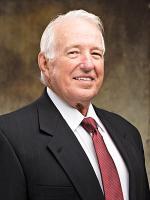 |
| Dr. Robert Skelton |
Biography
Dr. Robert Skelton is a TEES Distinguished Research Professor, and faculty fellow at the Texas A&M University Hagler Institute for Advanced Study. Skelton began his career at the Marshall Space Flight Center, working first with Lockheed Missiles and Space Company and then Sperry Rand for 12 years. From 1975-1996, Dr. Skelton served as a professor of aeronautics and astronautics at Purdue University. In 1996, he became director of UCSD’s Structural Systems and Control Laboratory at the University of California, San Diego (UCSD). In 2006, UCSD named Dr. Skelton the Daniel L. Alspach Professor of Dynamics Systems and Controls in the Jacobs School of Engineering and professor emeritus in 2009. He now is creating an interdisciplinary systems engineering program at TAMU. He has been involved with spacecraft control (SKYLAB and Hubble Space Telescope) for many years and has served on the National Research Council’s Aeronautics and Engineering Board. Dr. Skelton is a member of the NAE, a fellow of IEEE, an Emeritus fellow of AIAA, and a fellow of IFAC. He is a life member of the Alexander von Humboldt Foundation. His major awards include: the SKYLAB Achievement Award, the Japan Society for the Promotion of Science Award, the Humboldt Foundation Senior US Scientist Award, the Norman Medal from the American Society of Civil Engineers, and the AIAA Mechanics and Control of Flight Award. He is author or co-author of Model Error Concepts and Compensation [1986], Dynamic Systems Control [1988], A Unified Algebraic Approach to Control Design [1996], and Tensegrity Systems [2009].


